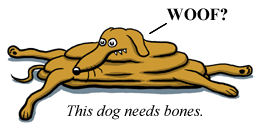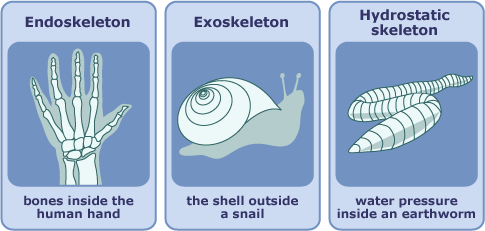 Multi-celled animals must support their own bodies — otherwise, they would collapse into squishy piles of flesh. Evolution has solved this problem in several different ways:
Multi-celled animals must support their own bodies — otherwise, they would collapse into squishy piles of flesh. Evolution has solved this problem in several different ways:
- An endoskeleton (endo = inside) is an internal skeleton, such as bones within the body.
- An exoskeleton (exo = outside) is an external skeleton, such as a shell outside the body.
- A hydrostatic skeleton (hydro = water) provides support with water pressure. Hydrostatic skeletons work like a rubber glove filled with water and sealed at the wrist — the water forces the fingers of the glove to stand up.

